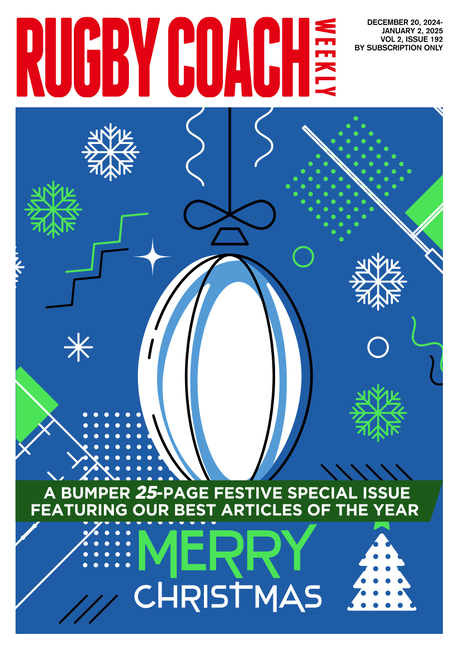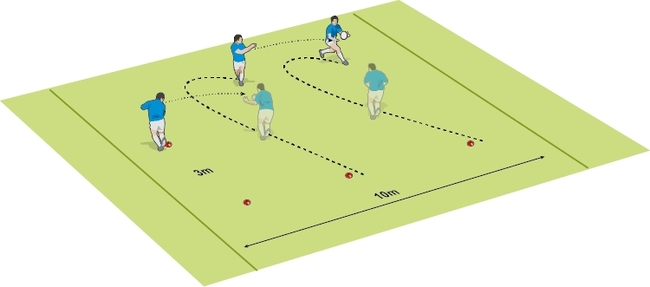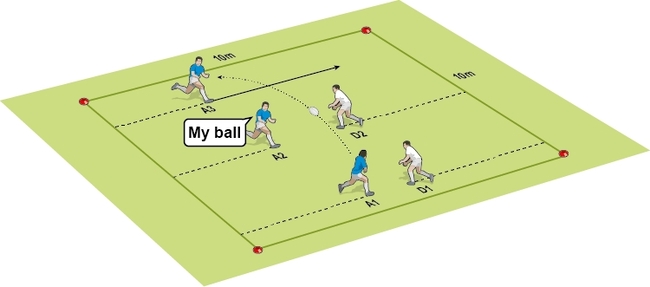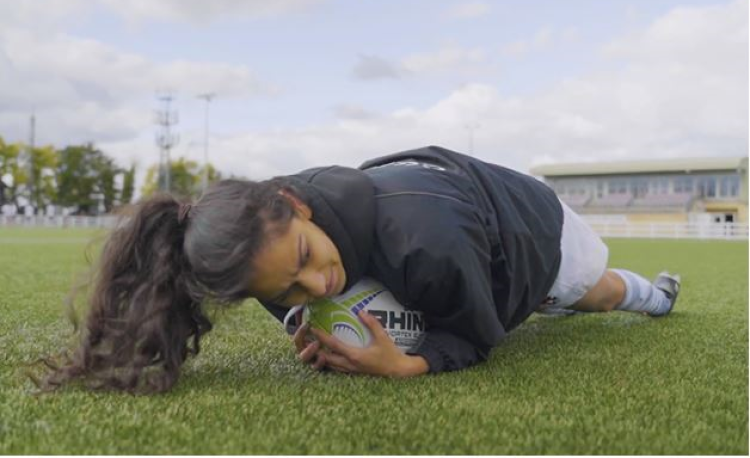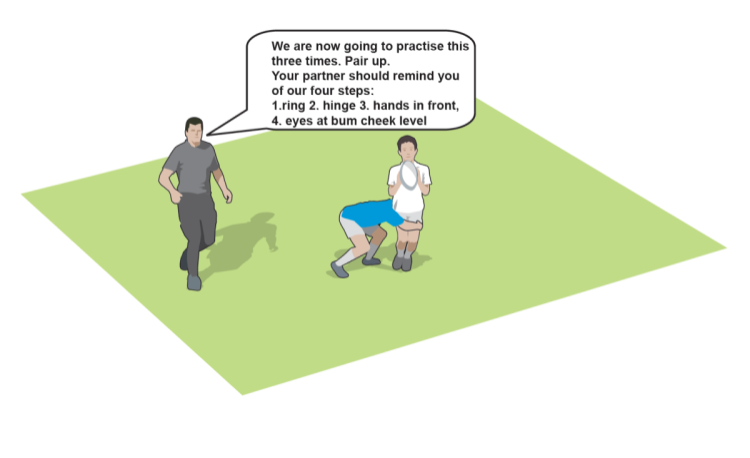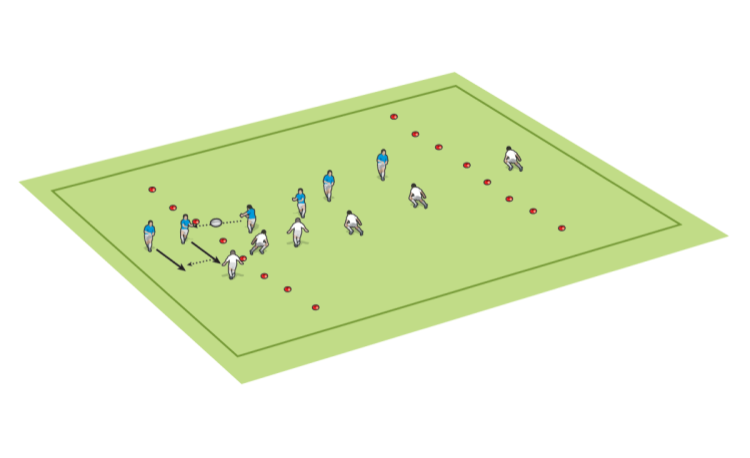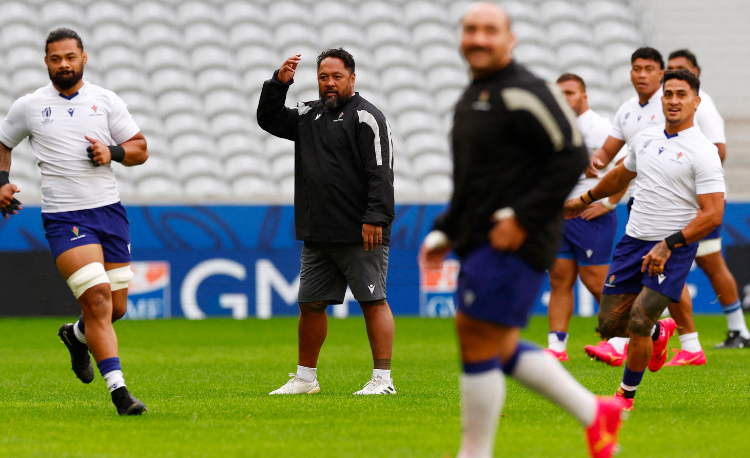Rugby coaching tips to beat an aggressive defence
In the year's leading up to the 2007 Rugby World Cup, the French team had developed a very aggressive defence. However, the Argentinean team (the Pumas) beat this "brick wall" in a novel way, going on to win both their matches against the French. Here's an article from Rugby Coach in September 2007 about how the Pumas outwitted the French in their opening game. The good news is that these tactics can readily be adopted by any team facing an aggressive defence.
Play a kick and chase game
The Argentineans bombed balls behind the midfield, using the old fashioned "Garryowen", not seen so much these days. The kicks were also aimed infield. This reduced the chances of the ball rolling into touch, which would have given the French lineout a chance to catch and drive – a crucial strength for "Les Bleus".
Of course a kick is only as good as the chase. With a pre-ordained kicking game as the major tactic, the Argentinean centres (12 and 13) closed down the French kick retrievers as one would hope, but the rest of the team also followed suit. Accuracy was vital, allowing the chasers time to compete for the ball and pressure the defenders.
The Argentinean fly half (10) dropped his high kicks into the space between the big French centres and the less experienced full back (15). This meant the full back had to run forward onto the ball, frequently against more than two Puma chasers. This gave the French little room for manoeuvre, reducing the chances of any sort of counter attack if they won the ball.
With the French forwards having to run back and around to compete, it is also meant the bulky Argentinean pack was moving forward without having to shift across the field.
The tactic did not always mean the Pumas won the ball back, but they tried it so often that it did cough up some very useful "go forward" attacking situations, which would not have otherwise occurred against this type of defence. It is also pushed the attack behind the defence. Consequently much vaunted defenders, such as the flankers Betsen and Martin, could not disrupt and drive back the Puma's attacking ball.
Close push
If the defence is aggressive, then you don't want to be on the back foot. So don't pass the ball backwards!
Most of the Puma attacks with the ball in hand were from "pick and go", where a forward scoops up the ball at the back of a ruck and then attacks the nearest defender. The forwards then drove close and tight to the sides of the ruck, and very low. They inched forward and retained possession.
The French could not make the power hits they wanted. Meanwhile the Argentineans were not having to use up energy, moving forwards a long way from one breakdown to another.
Summary
Against an aggressive defence who don't give you any space:
- Go forward with high kicks into the midfield.
- Don't pass close to rucks and mauls. Instead pick and go, getting very low.
This article is taken from my Rugby Coach publication. Published each month, Rugby Coach looks at new and proven ways to coach skills, improve fitness, motivate players and develop the tactical nous to beat your opponents.
Newsletter Sign Up
Coaches Testimonials

Gerald Kearney, Downtown Las Vegas Soccer Club

Paul Butler, Florida, USA

Rick Shields, Springboro, USA

Tony Green, Pierrefonds Titans, Quebec, Canada
Subscribe Today
Be a more effective, more successful rugby coach
In a recent survey 89% of subscribers said Rugby Coach Weekly makes them more confident, 91% said Rugby Coach Weekly makes them a more effective coach and 93% said Rugby Coach Weekly makes them more inspired.
Get Weekly Inspiration
All the latest techniques and approaches
Rugby Coach Weekly offers proven and easy to use rugby drills, coaching sessions, practice plans, small-sided games, warm-ups, training tips and advice.
We've been at the cutting edge of rugby coaching since we launched in 2005, creating resources for the grassroots youth coach, following best practice from around the world and insights from the professional game.


